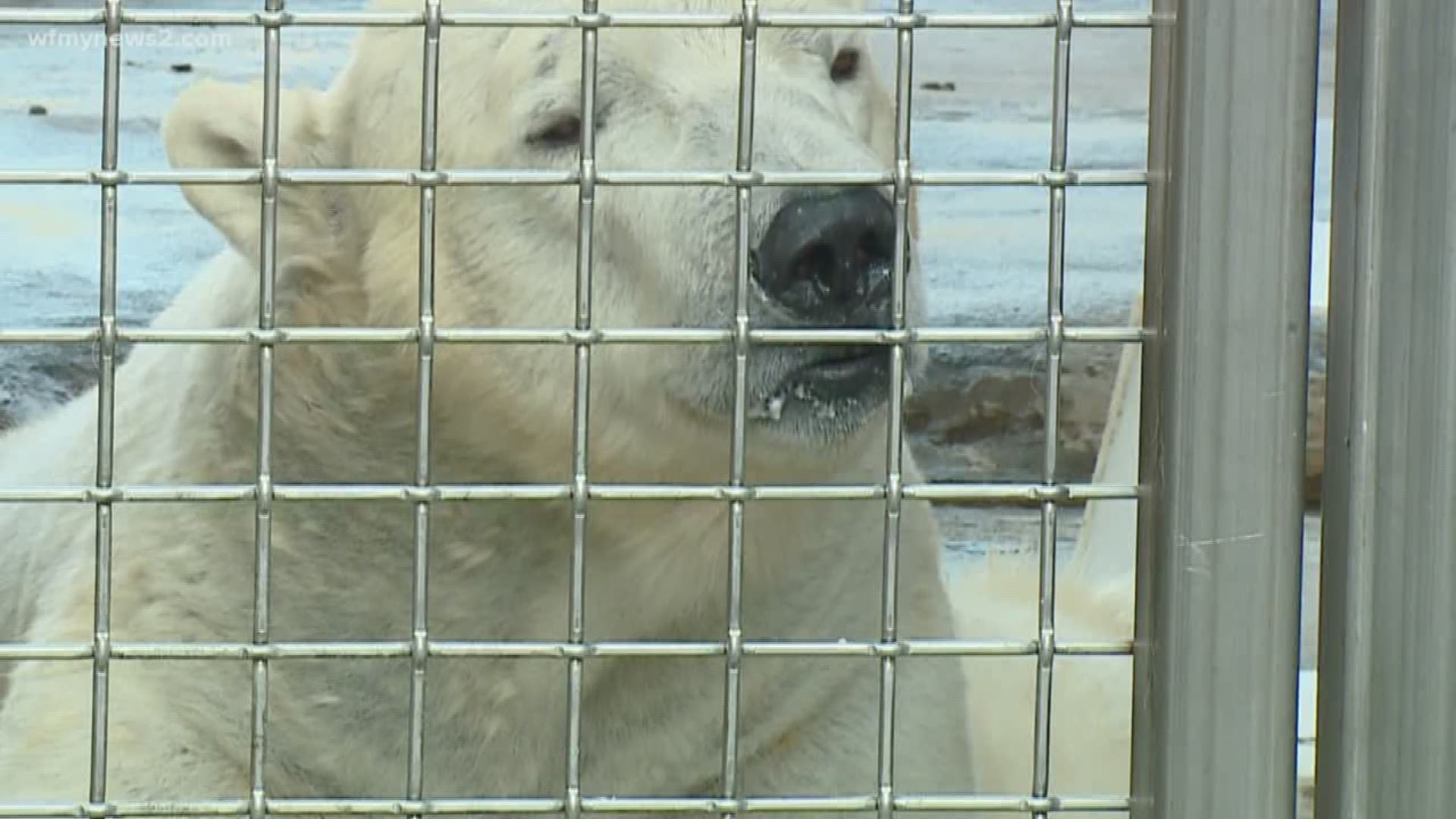Behind the scenes at the North Carolina Zoo's polar bear den, you hear a bear growl deeply with desire.
Sure, the treats zookeeper Nicole Pepo uses for enrichment look pretty appetizing, but you can tell this big beast--10-foot-tall Nikita--is distracted by a beauty nearby.
"His main job is to guard her and make sure there are no male polar bears allowed to be near her," said Pepo.
Pepo remembers when Nikita arrived at the North Carolina Zoo in 2016 as a mate for the zoo's female bear, Anana. They're one of only 11 polar bear duos in accredited US zoos, so the baby buzz started quickly.
"Instantaneous. The pressure is on. We had to play matchmaker."
Polar bear staff describes Anana as a strong-willed princess. Nikita--the joker with a mind of his own.
"He's very funny. He's very vocal. He'll let you know what he wants and when he wants it."
She can tell what they like and dislike, but can she tell whether they like each other?
"Ummm..." Pepo laughed.
They're not exactly Romeo and Juliet -- more like an older sister being chased by her little brother's annoying friend. Anana is 18 years old. Nikita is 11.
"She's a bit of a cougar. He only cares that she's a girl," said NC Zoo curator of mammals Jennifer Ireland.
Ireland said age is just a number, but the bears are still, uh, figuring it out.
"He's bred her each year but hasn't quite gotten it right. He's a little off, or he's not doing what he's supposed to be doing, but he gets better! There's a lot of dating that goes on ahead of time," Ireland explained.
Polar bear pregnancy is complicated. Breeding season runs January to May. Even if the magic happens, an embryo won't implant for four months. Often, there's a pseudo-pregnancy--the bear's hormones tell her she's pregnant, but no cub ever shows up. When it does, it's typically a twin, and usually only one survives. Zookeepers believe any surviving cub could help the species long-term.
What's the plight of wild polar bears? Depends which research you trust. But the NC Zoo's partner, Polar Bear International, believes by the year 2100, less than a century from now, zoos are the only place polar bears will exist.
NC Zoo education director and 'Polar Bear Ambassador' Steve Gerkin explained, "Sea ice is their land. If it's forming later and leaving sooner, it's decreasing opportunities to hunt, breed, den. There's not enough food supplies."
Gerkin, like many social media users, saw the gut-wrenching video that went viral a few months ago. A National Geographic photographer captured video of a starving wild polar bear picking through a trash can on iceless Arctic land.
"A lot of the research being done is very situational. Looking at certain populations, there are a few doing OK but overall, polar bear numbers are going down," Gerkin said.
That's why it's Gerkin's mission to take the NC Zoo's biggest bears to the smallest visitors -- the thousands of children who come through the popular exhibit every year.
Nikita and Anana were born in zoos. A baby would be, too. So is breeding in captivity worth breeding at all?
"I don't think you'd find a single zoo person out there that said it'd be awesome if we didn't have to be part of this process. With those numbers going down, trying to maintain that population under human care is vital," Gerkin said.
Ireland added, "Sometimes, our critics don't give us enough credit. I promise you no one cares more about these animals than we do, and we do our best to provide them the best life we can."
And they hope the best life involves a new life -- if this polar pair makes a baby bear sometime soon.
"This year, we're really, really hopeful!"

